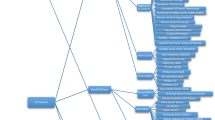Abstract
Nowadays, microprocessor-based system’s robustness under Single Event Effects (SEEs) represents a very important concern. A widely adopted solution to make a microprocessor-based system robust consists in modifying the application code by adding redundancy and fault tolerance capabilities. In this context, the main idea behind this paper is to evaluate a software-based technique named Optimized Embedded Signature Monitoring (OESM) using an FPGA-based fault injection technique, which is able to inject a high number of Single Event Upsets (SEUs) and Single Event Transients (SETs) in a short period of time. The obtained results demonstrated not only the increase of system’s robustness level, but also point out the remaining weak areas in the microprocessor-based system with respect to both types of SEEs.







Similar content being viewed by others
References
Avienzis A (1985) The N-version approach to fault-tolerant software. IEEE Trans Softw Eng 11(12):1491–1501
Cheynet P, Nicolescu B, Velazco R, Rebaudengo M, Sonza Reorda M, Violante M (2000) Experimentally evaluating an automatic approach for generating safety-critical software with respect to transient errors. IEEE Trans Nucl Sci 47(6):2231–2236
Entrena L, García-Valderas M, Fernández-Cardenal R, Portela M, López-Ongil D (2009) SET emulation considering electrical masking effects. IEEE Trans Nucl Sci 56(4):2021–2025
Entrena L, Garcia-Valderas M, Fernandez-Cardenal R, Portela M, Lopez-Ongil C (2012) Soft error sensitivity evaluation of microprocessors by multilevel emulation-based fault injection. IEEE Trans Comp 61(3)
International Technology Roadmap for Semiconductors (2009) Edition (www.itrs.net)
López-Ongil C, García-Valderas M, Portela-García M, Entrena L (2007) Autonomous fault emulation: a new FPGA-based acceleration system for hardness evaluation. IEEE Trans Nucl Sci 54(1):252–261, Part 2
Nicolaidis M (2005) Design for soft error mitigation. IEEE Trans Device Mater Reliab 5(3):405–418
Oh N, Shirvani PP, McCluskey EJ (2002) Control-flow checking by software signatures. IEEE Trans Reliab 51(2):111–122
PICmicro® 18C MCU Family, Reference Manual (2000) Microchip Technology Inc., ref. DS39500A
Vargas F, Rocha CA, Farina A, de Alecrim AA Jr (2007) Embedded signature monitoring based on profiling deployed software technique. IEEE Int East–west Des Test Symp, Yerevan, Armenia, pp. 230–236
Author information
Authors and Affiliations
Corresponding author
Additional information
Responsible Editor: V. Champac
Rights and permissions
About this article
Cite this article
Portela-Garcia, M., Lindoso, A., Entrena, L. et al. Evaluating the Effectiveness of a Software-Based Technique Under SEEs Using FPGA-Based Fault Injection Approach. J Electron Test 28, 777–789 (2012). https://doi.org/10.1007/s10836-012-5321-4
Received:
Accepted:
Published:
Issue Date:
DOI: https://doi.org/10.1007/s10836-012-5321-4




